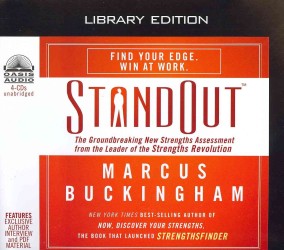基本説明
第一部「基礎神経科学」では、生物物理学、発生、感覚系、神経内分泌学、認知神経科学などの基礎科学を、第二部「臨床神経科学」では、臨床に関わるテーマとして発達障害、疼痛、神経免疫障害、精神障害などをカバー。
Offers medical students and graduate researchers around the world a comprehensive introduction and overview of modern neuroscience.
Full Description
Edited and authored by a wealth of international experts in neuroscience and related disciplines, the aim behind this key new resource is to offer medical students and graduate researchers around the world a comprehensive introduction and overview of modern neuroscience. Neuroscience research is certain to prove a vital element in combating mental illness in its various incarnations, a strategic battleground in the future of medicine, as the prevalence of mental disorders is becoming better understood each year. Hundreds of millions of people worldwide are affected by mental, behavioral, neurological and substance use disorders. The World Health Organization estimated in 2002 that 154 million people globally suffer from depression and 25 million people from schizophrenia; 91 million people are affected by alcohol use disorders and 15 million by drug use disorders. A more recent WHO report shows that 50 million people suffer from epilepsy and 24 million from Alzheimer's and other dementias.Because neuroscience takes the etiology of disease-the complex interplay between biological, psychological, and sociocultural factors-as its object of inquiry, it is increasingly valuable in understanding an array of medical conditions. A recent report by the United States' Surgeon General cites several such diseases: schizophrenia, bipolar disorder, early-onset depression, autism, attention deficit/ hyperactivity disorder, anorexia nervosa, and panic disorder, among many others. Not only is this volume a boon to those wishing to understand the future of neuroscience, it also aims to encourage the initiation of neuroscience programs in developing countries, featuring as it does an appendix full of advice on how to develop such programs. With broad coverage of both basic science and clinical issues, comprising 106 chapters from a diversity of international authors and including complementary video components, Neuroscience in the 21st Century will serve as a comprehensive resource to students and researchers alike.
Contents
Section 1 Basic Neuroscience.- Part 1 Biophysics.- 1Water, ions, membranes, pumps and transporters.- 2 Voltage-gated ion channels.- 3 Ionotropic glutamate receptors.- 4 Signal transduction-dependent channels.- 5 Membrane Potentials.- Part 2 Development.- 6 Stem cells: Neural stem cells in cerebral cortex development.- 7Adult neurogenesis.- 8 Dendrites: a key structural element of neurons.- Part 3 Cell Biology of neurons and glia.- 9 Dendritic function.- 10 Axonal transport.- 11 Cell biology of the synapse.- 12 Molecular regulation of synaptic release.- 13 The postsynaptic density.- 14 Gap junctions, electric synapses.- 15 Glial cells.- 16 Immune system cells.- 17 Psychoneuroimmune phenomena: Neuroimmune interactions.- Part 4 Sensory Systems (Neuroanatomy and Physiology).- 18 Retina: Neuroanatomy and physiology.- 19 The superior colliculus and visual thalamus.- 20 Cortical processing of visual signals.- 21 Audition: Hearing and Deafness.- 22 Somatosensation: end organs for tactile sensation.- 3 Taste.- 24 Olfaction.- 25 Visuomotor Integration.- 26 Vestibular inputs: The Vestibular System.- 27 Kinesthetic inputs.- 28 PainPart 5.- Motor Control.- 29 Spinal motoneurons.- 30 Spinal interneurons.- 31 Systems descending from the brainstem: Basic principles.- 32 Systems descending from the brainstem: Functional recovery following damage.- 33 Basal ganglia: Basic principles.- 34 Dystonia.- 35 Cerebellum - Anatomy and Function.- 36 The Cerebellum: Eye Movements.- 37 Cortical motor control.- 38 Locomotion: Circuits and Physiology.- 39 PosturePart 6.- Neurophysiology of Other, Specific CNS Regions and Networks.- 40Basic principles of mammalian CNS systems.- 41Frontal cortex.- 42 Limbic cortex: The functional neuroanatomy of emotion and hedonic processing.- 43 Hypothalamus.- 44 Autonomic nervous systems.- 45.- Respiration.- 46 Spinal reflexes Part 7.- Neurochemistry, Neuropharmacology.- 47 Transmitters and peptides: Basic principles.- 48 Transmitter and peptide receptors: Basic principles.- 49 Opioid peptides.- 50 Trophic factors: Neurotrophic factors.- 51 Brain Energy Metabolism.- 52 Blood Brain Barrier.- Part 8 Neuroendocrinology.- 53 Brain control over pituitary gland hormones.- 54 Hormone effects on behavior.- 55 Critical periods during development: Hormonal influences on neurobehavioral transitions across the lifespan.- 56 Mechanisms of homeostatically regulated behaviors.- 57 Mechanisms of behaviors related to reproduction.- 58 Seasonal rhythms in behavior.- Part 9 Regulation of Natural Behaviors.- 59 Circadian physiology.- 60 The suprachiasmatic nucleus and the circadian timekeeping system of the body.- 61 Sleep regulation and insomnia.- 62 Genomic imprinting and brain function.- 63 Epigenetic mechanisms: DNA methylation and histone protein modification.- 64 Stress research: past, present and future.- 65 Fear.- 66 Aggression.- 67 Emotions studied by imaging of the human brain: The somatic and emotional motor systems.- 68 Parental behavior.- 69 Sexual behavior.- 70 Social behavior.- Part 10.- Cognitive Neuroscience.- 71 Elementary CNS arousal.- 72 Neurobiology of Learning and Memory.- 73 Cognitive Functions as Revealed by Imaging of the Human Brain.- 74 Aging of the brain.- Part 11 Computational Neuroscience.- 75 Computational neuroscience of synapses and neurons.- 76 Computational neuroscience of neuronal networks.- 77 Biological Modeling.- Section 2 Clinical Neuroscience.- Part 12 Developmental Disorders.- 78 Prader-Willi and Angelman Syndromes.- 79 Fragile X-Associated Disorders.- 80 Fetal alcohol syndrome.- 81 Autism.- 82 Anorexia nervosa and bulimia.- Part 13 Systems Disorders.- 83 Sleep disorders.- 84.- Traumatic brain damage.- 85 Spinal cord damage.- 86 Ischemic Stroke - Basic pathophysiology and clinical implication.- Part 14 Pain.- 87 Non-migrainous headache.- 88 Migraine.- 89 Central mechanisms of pain suppression.- Part 15 Neuroimmune Disorders.- 90 Multiple sclerosis.- 91 Myasthenia gravis.- 92.- Infections of the nervous system.- Part 16 Addictive Disorders.- 93 Psychostimulants and addiction.- 94 Neurobiology of Alcohol Addiction.- 95 Internet addiction.- 96 Abuse of performance enhancing drugs.- 97 Food addiction. - Part 17 Degenerative Diseases.- 98 Motor neuron disease: Amyotrophic lateral sclerosis.- 99 Parkinson's disease.- 100 Huntington's disease. - 101 Problems during aging (Alzheimer's, et al.)..- Part 18 Gender Identity.- 102 Sexual differentiation of the human brain in relation to gender-identity, sexual orientation and neuropsychiatric disorders.- Part 19.- Psychiatric Disorders.- 103 Depressive disorders.- 104 The Neurobiology of Bipolar Disorder.- 105 Schizophrenia BM Appendix Seven Steps to Setting up a Neuroscience Program in a Developing Country.- Index








